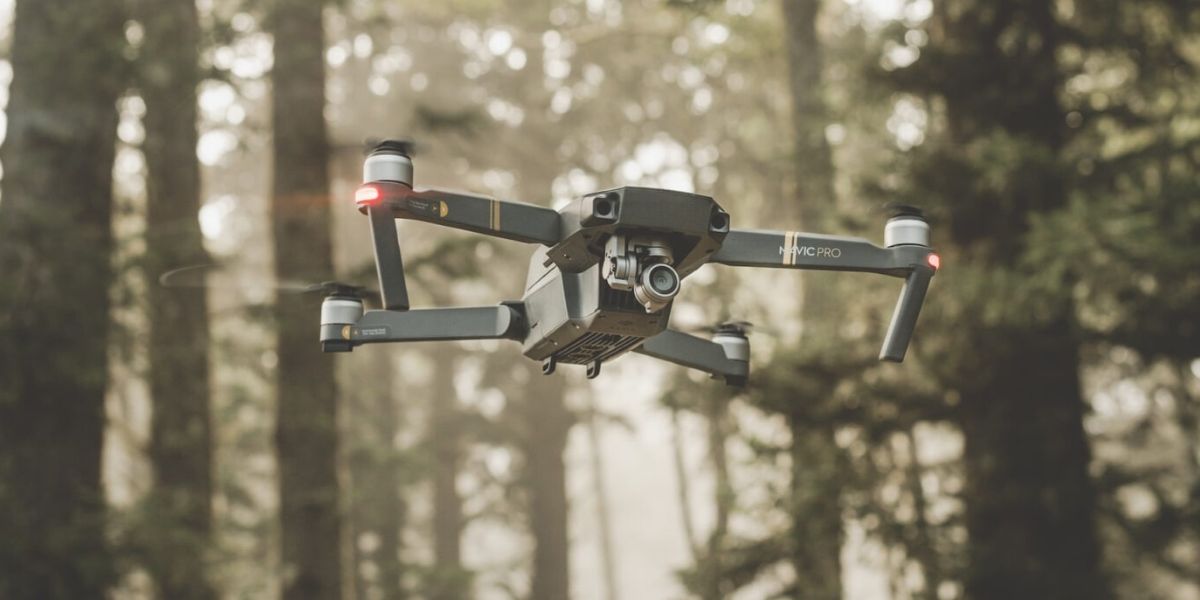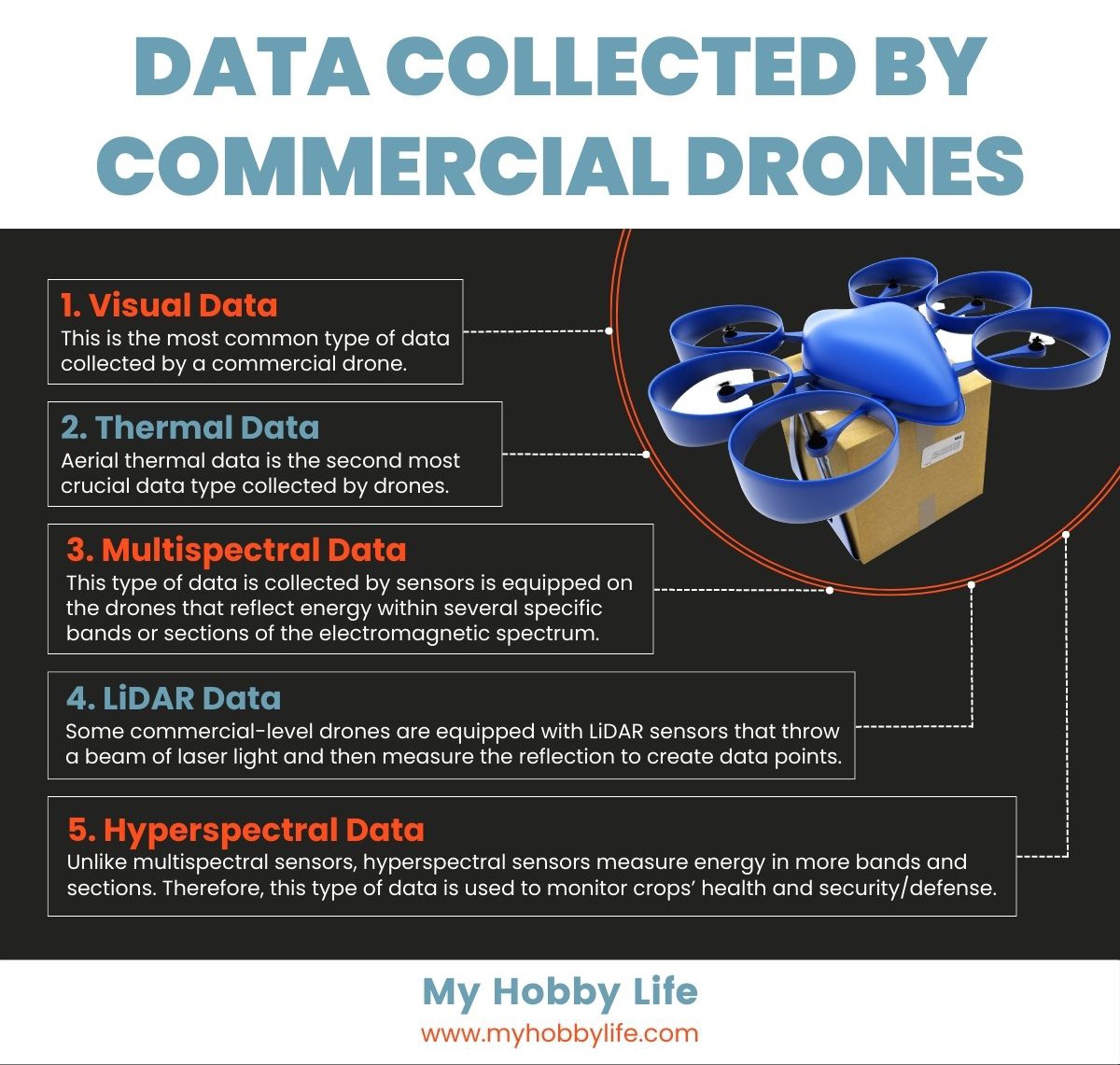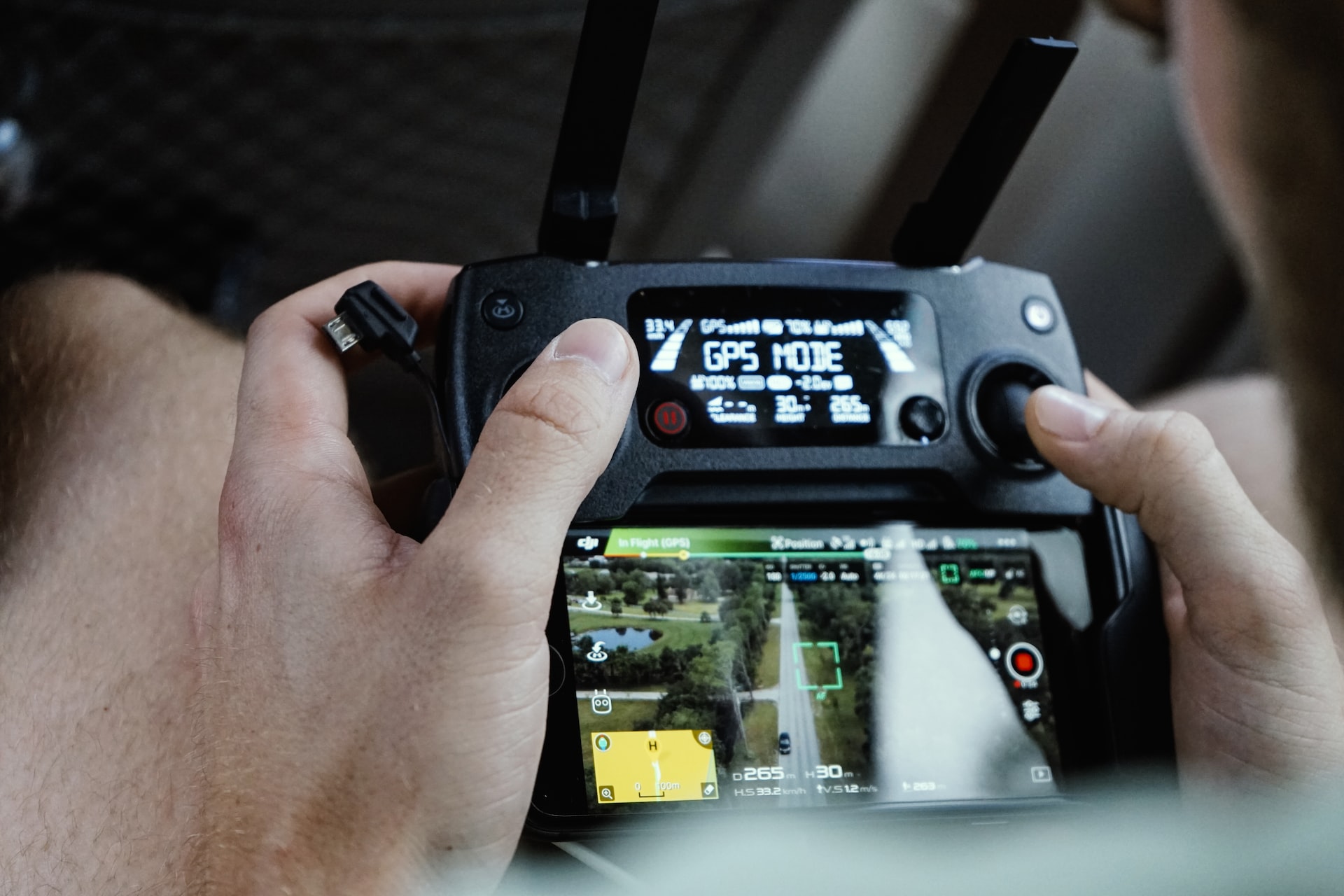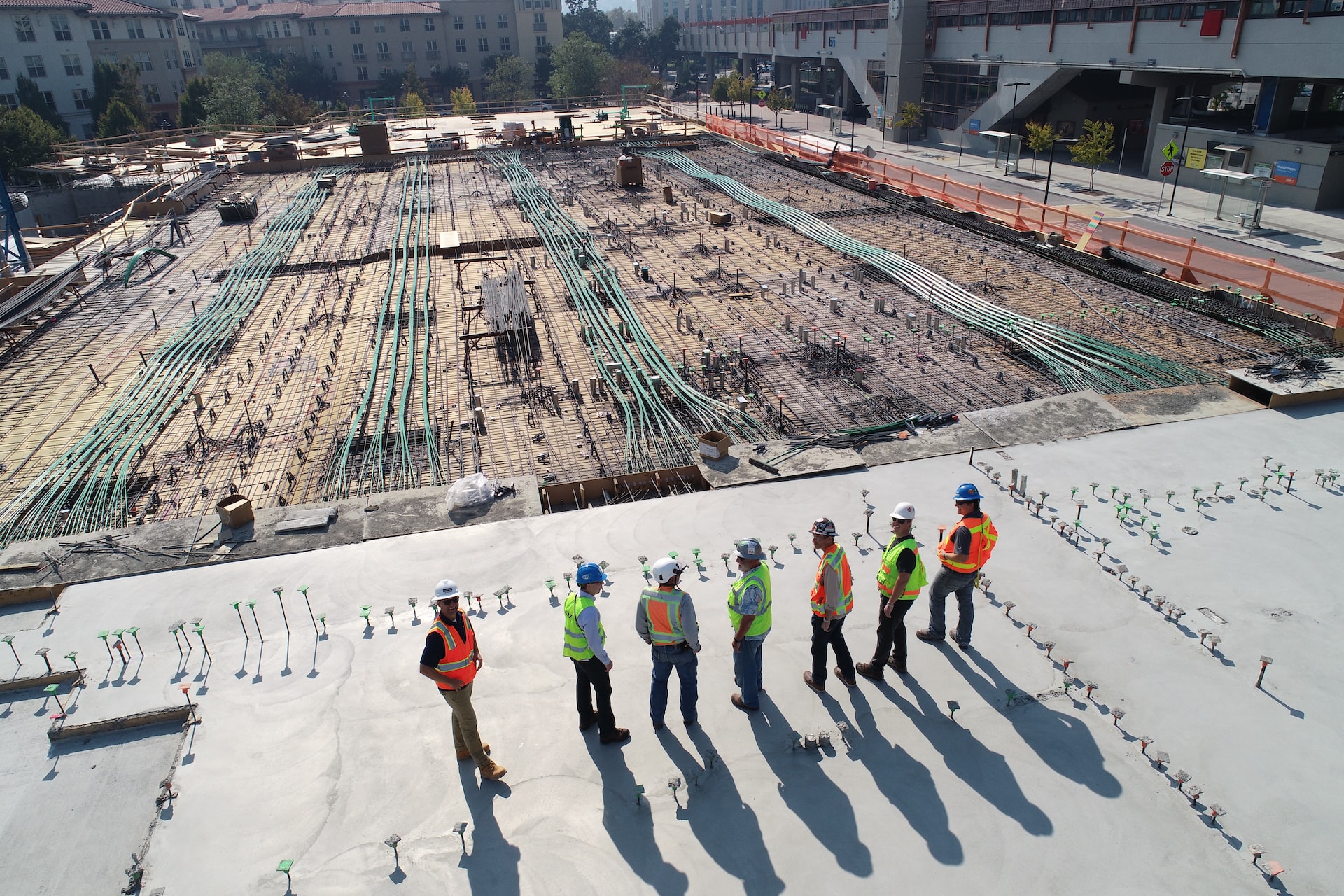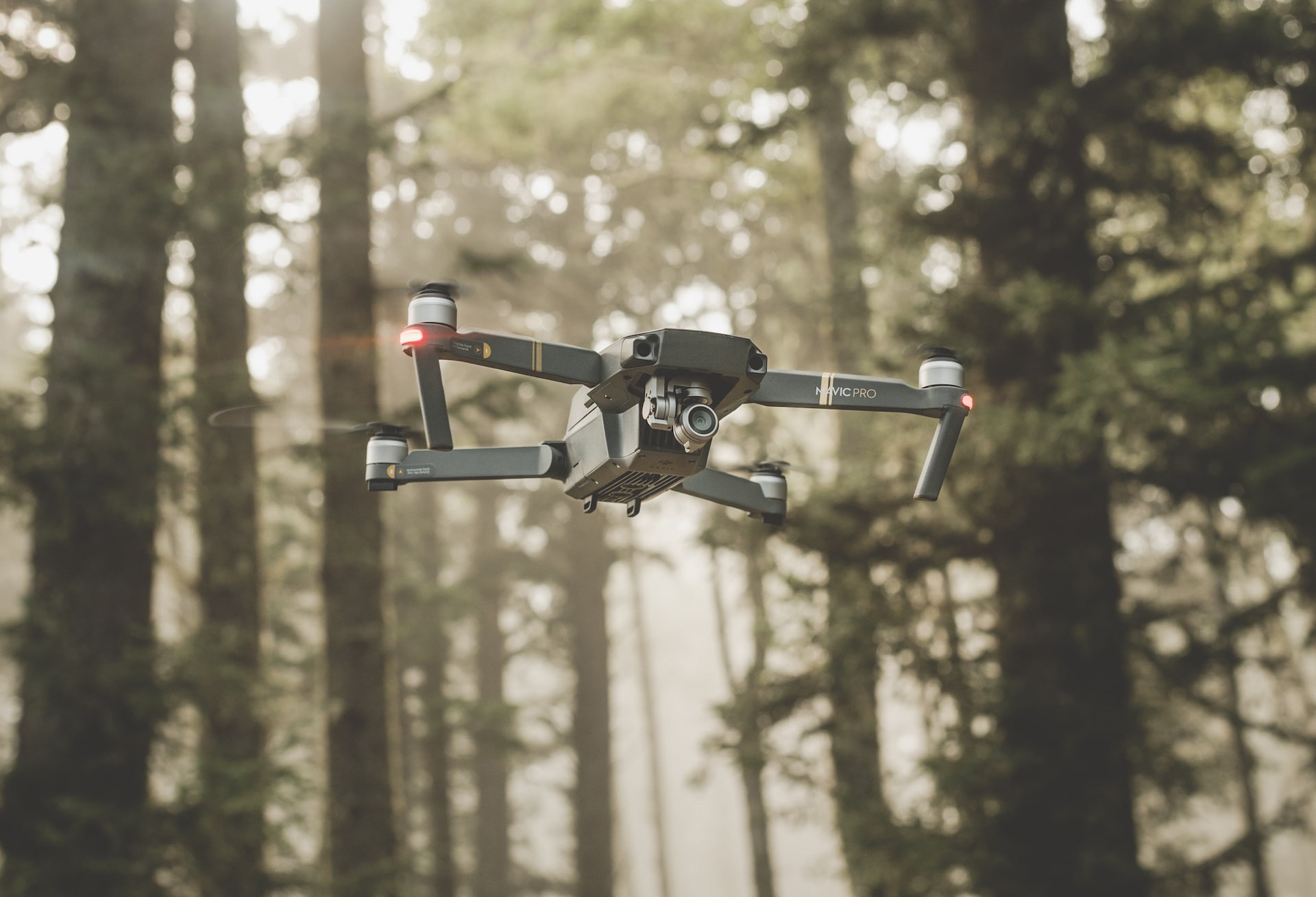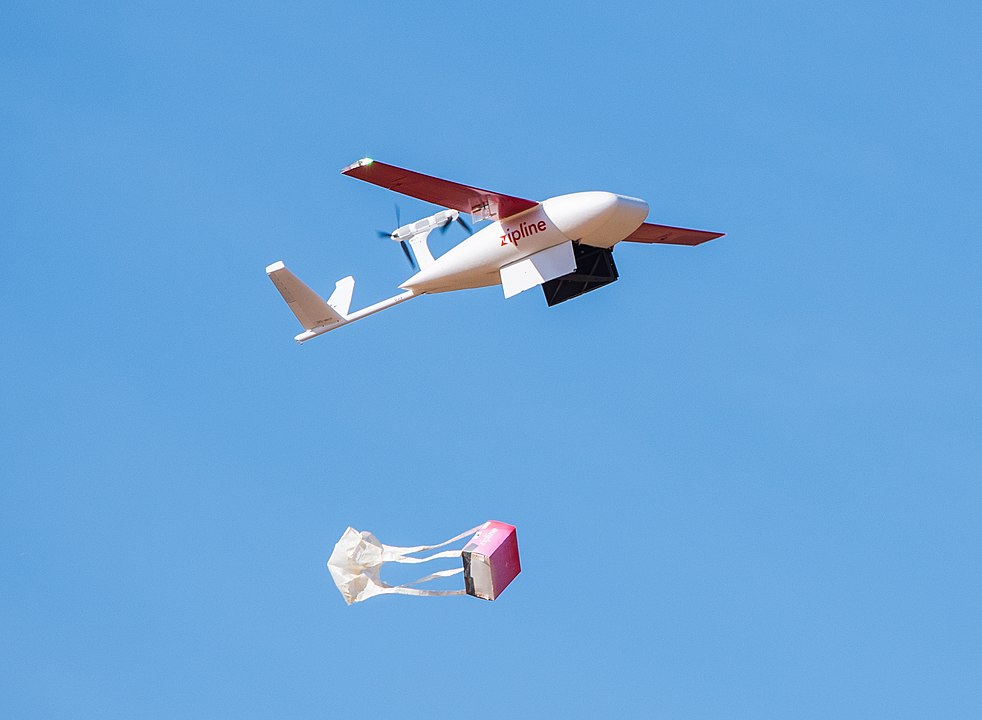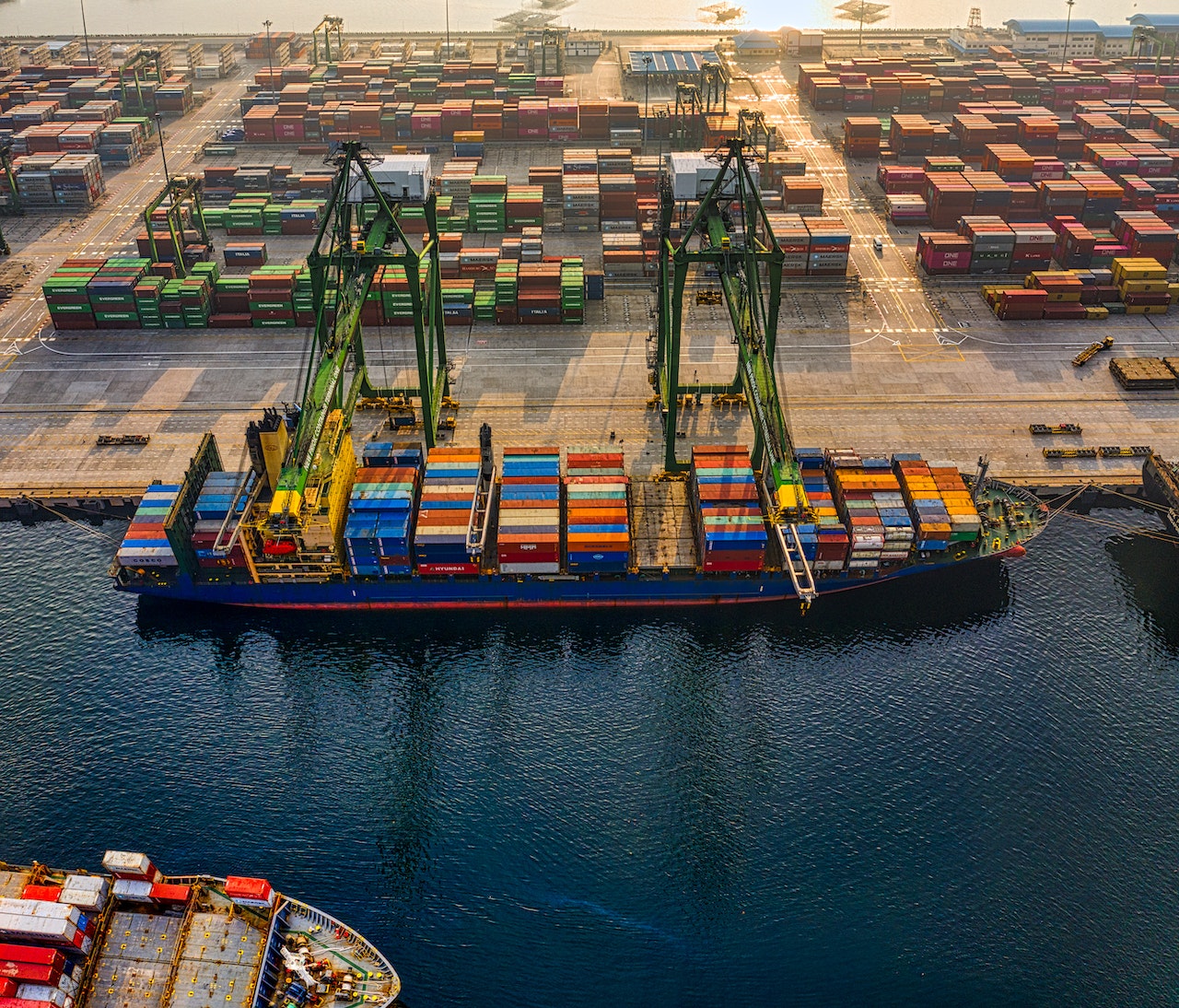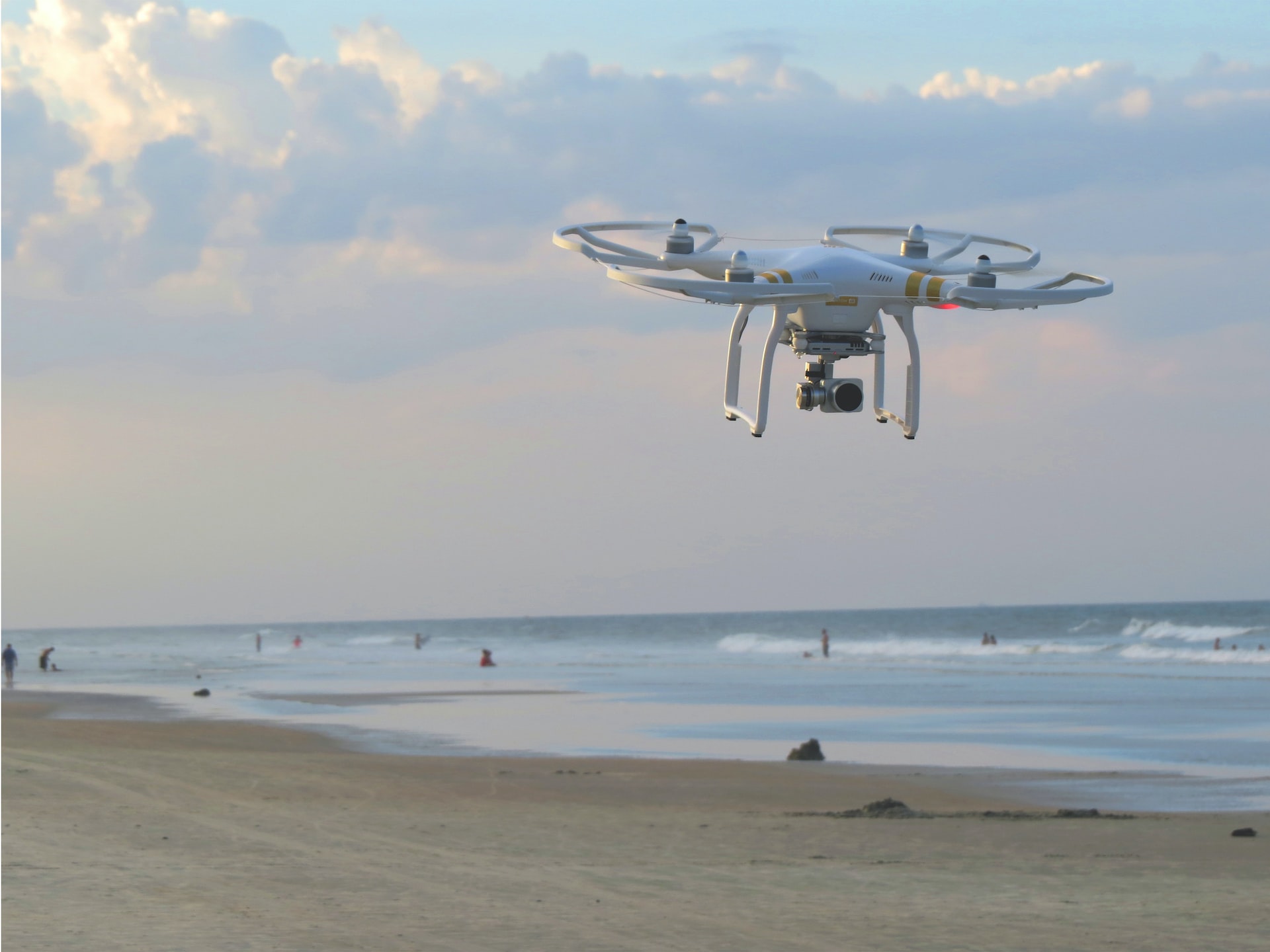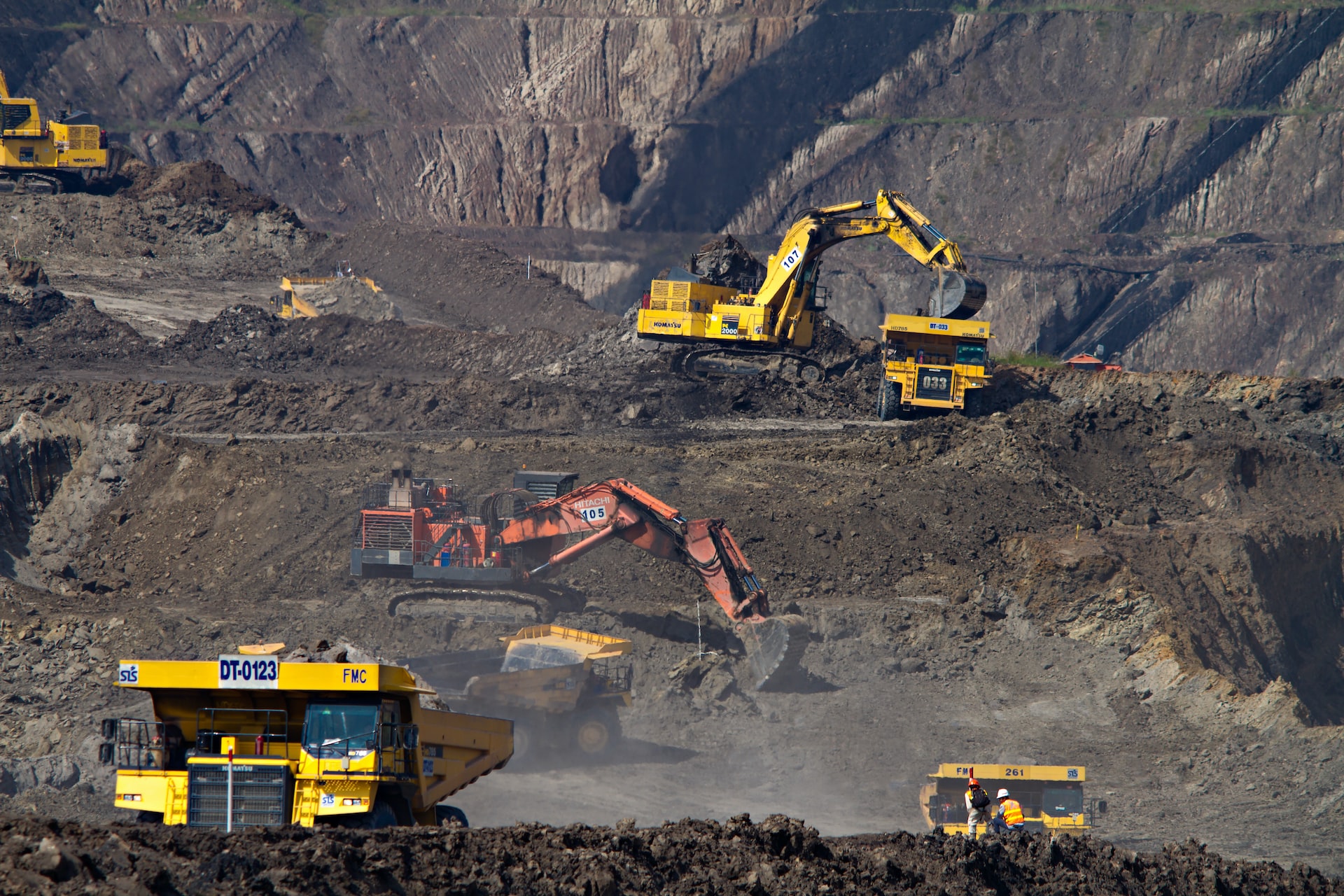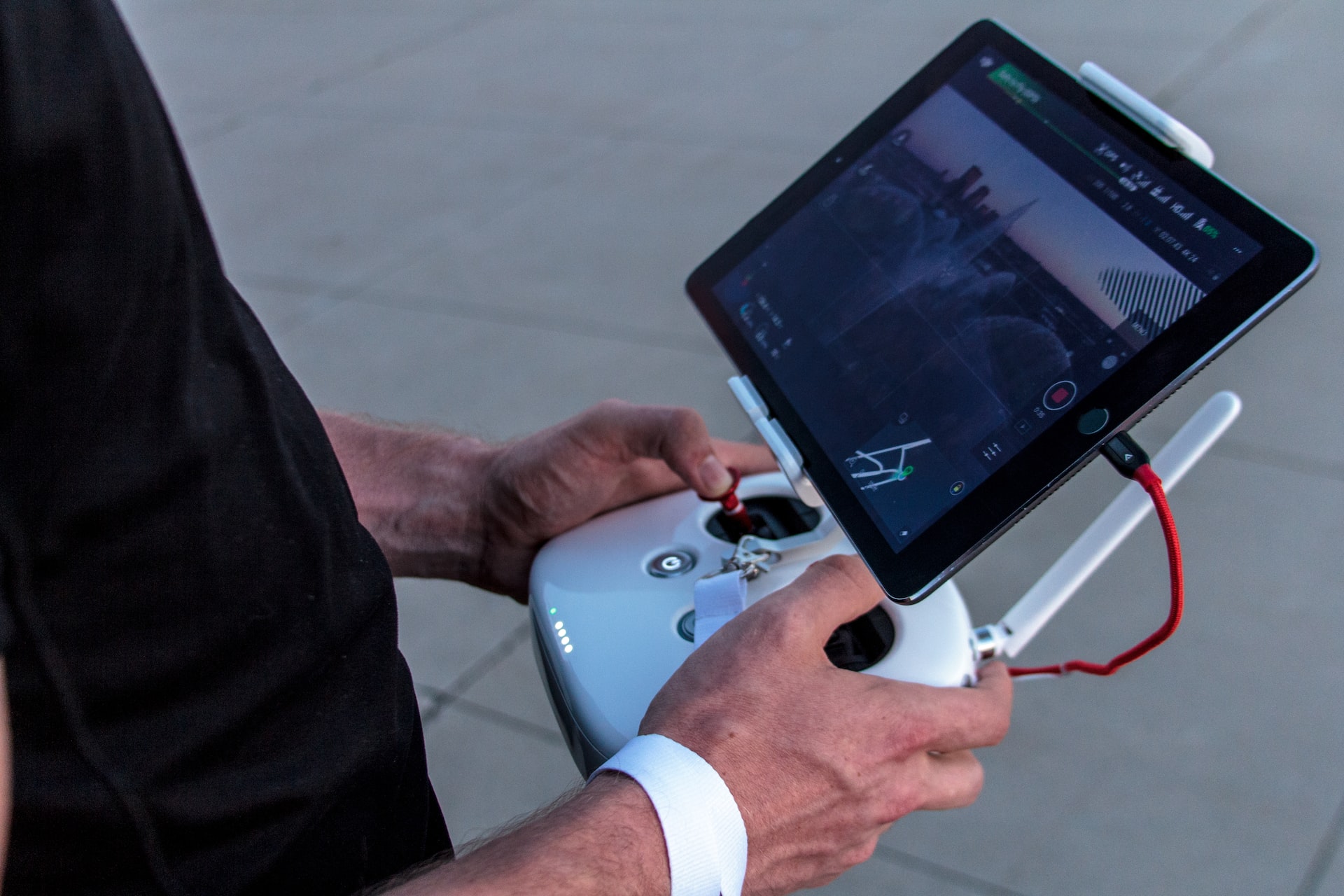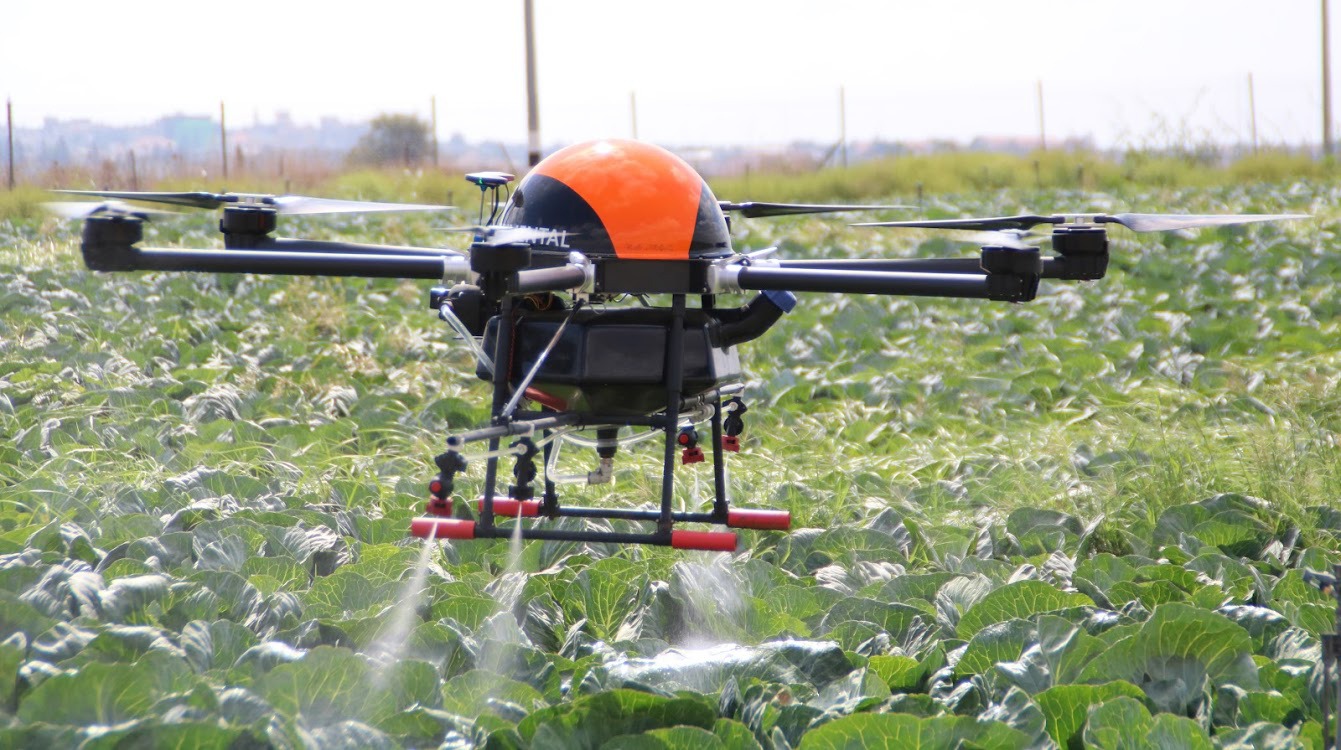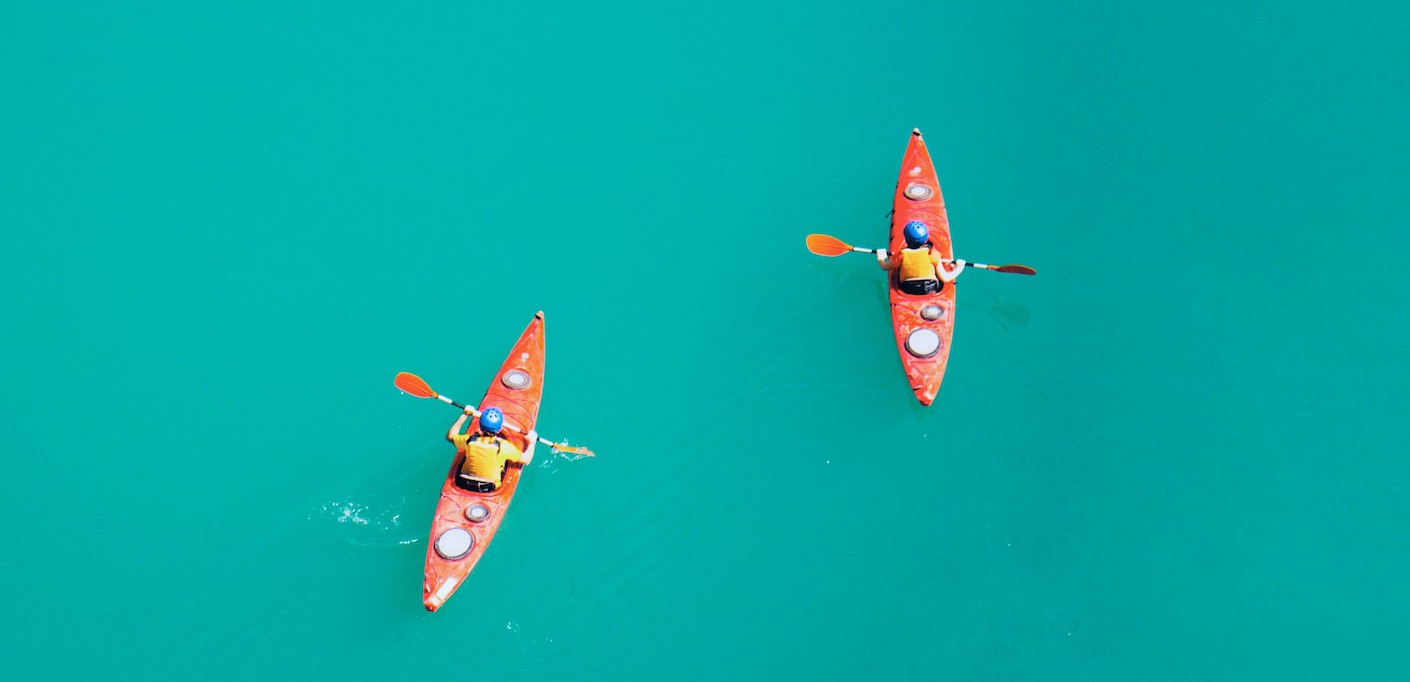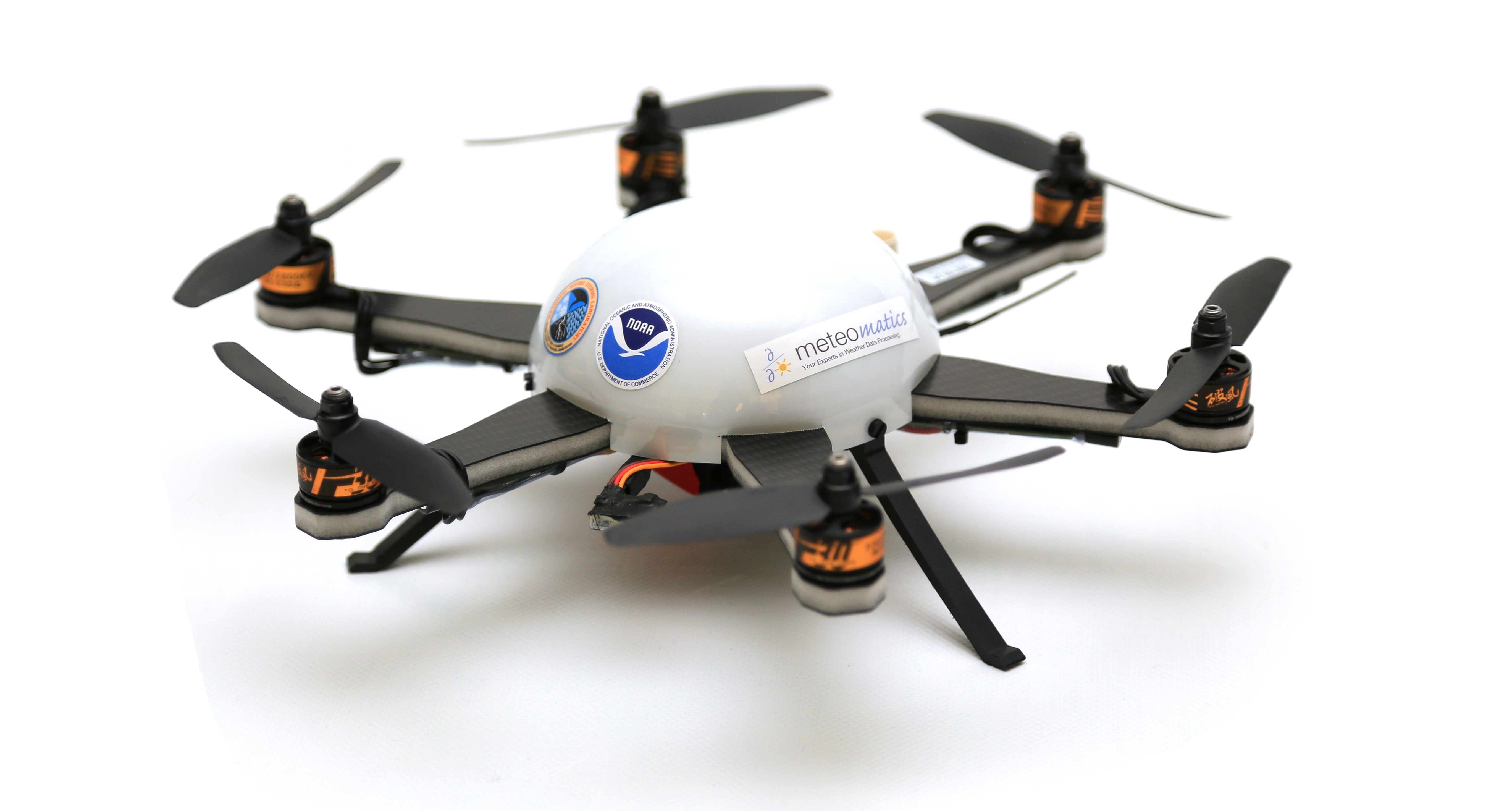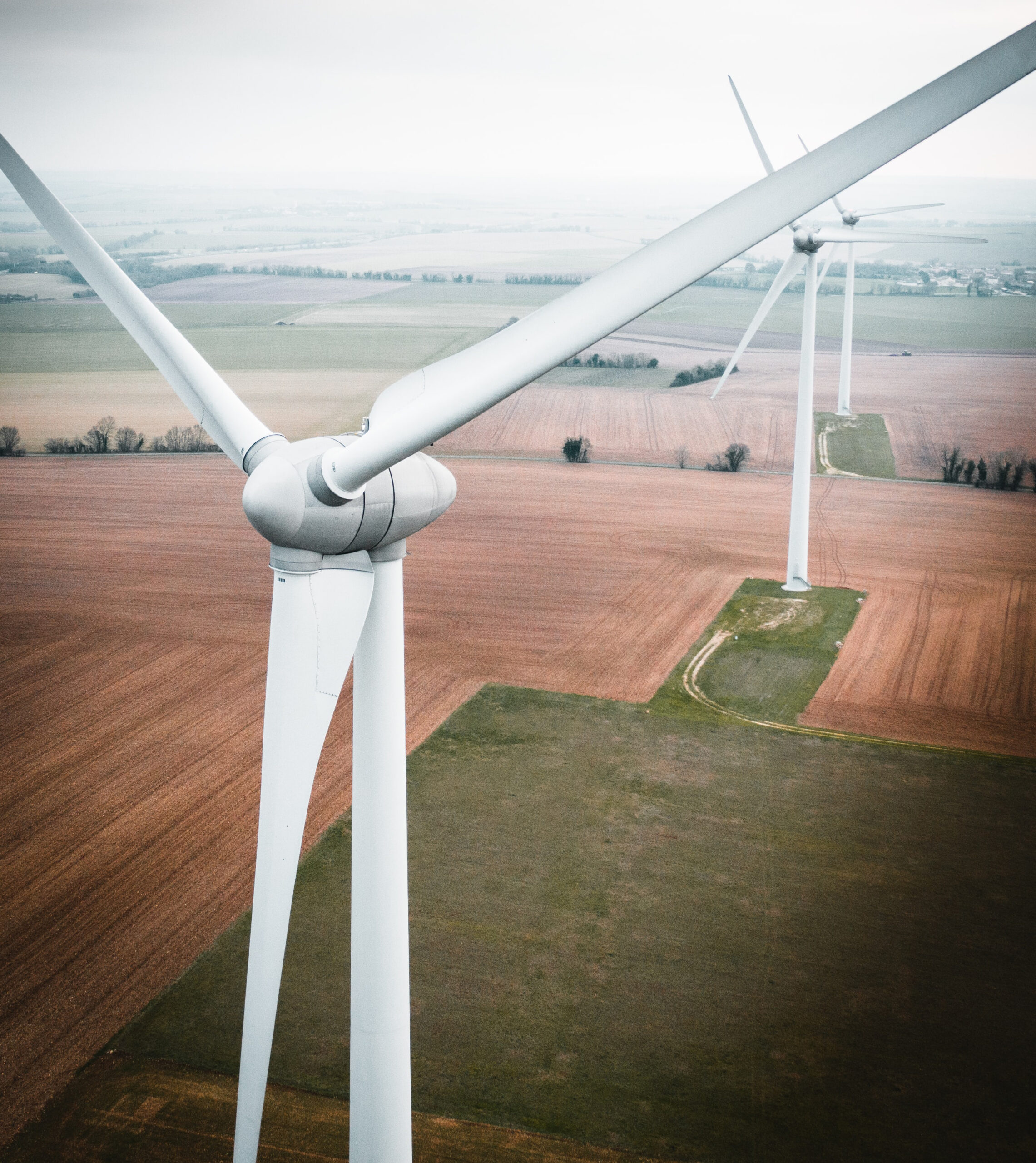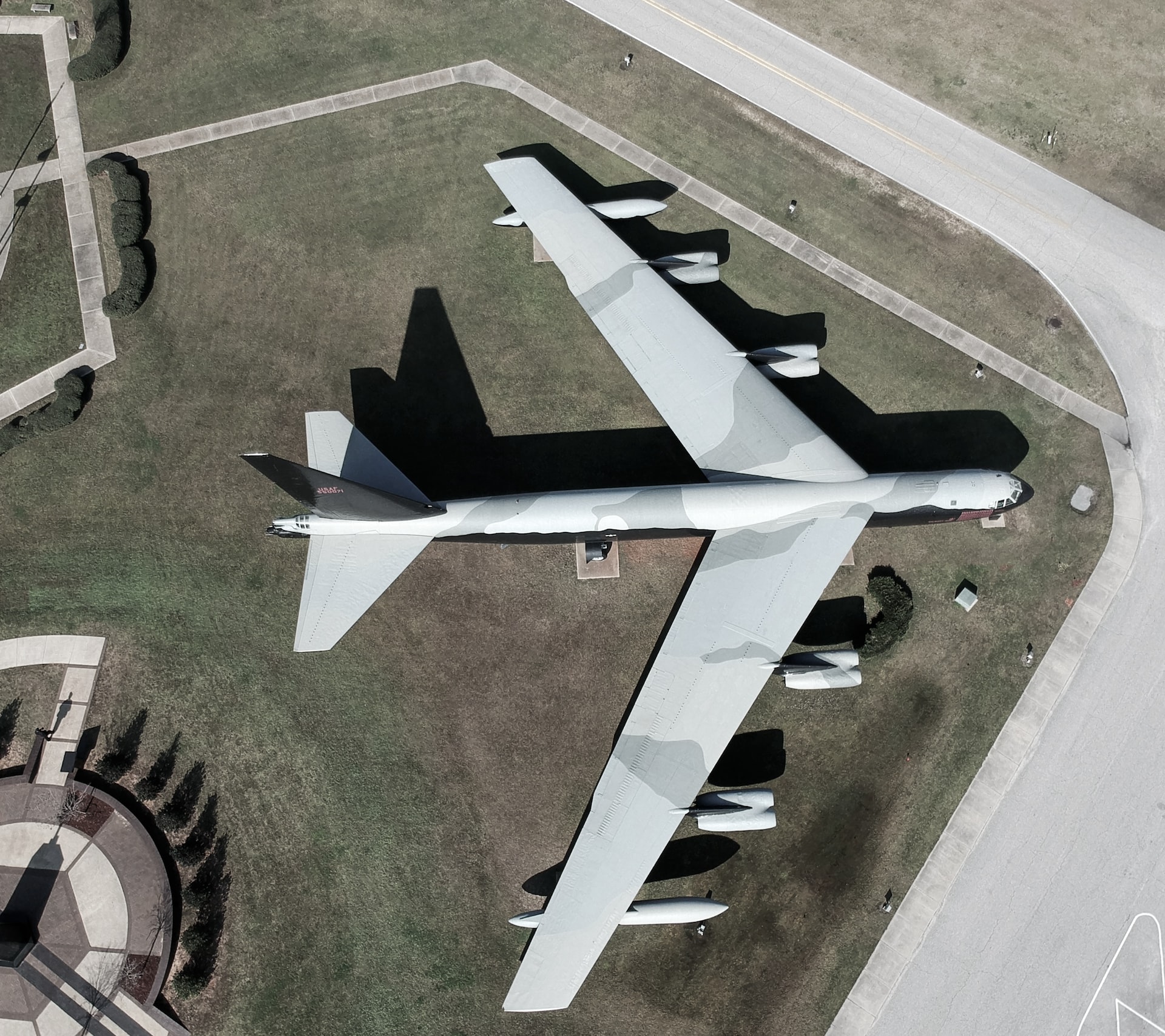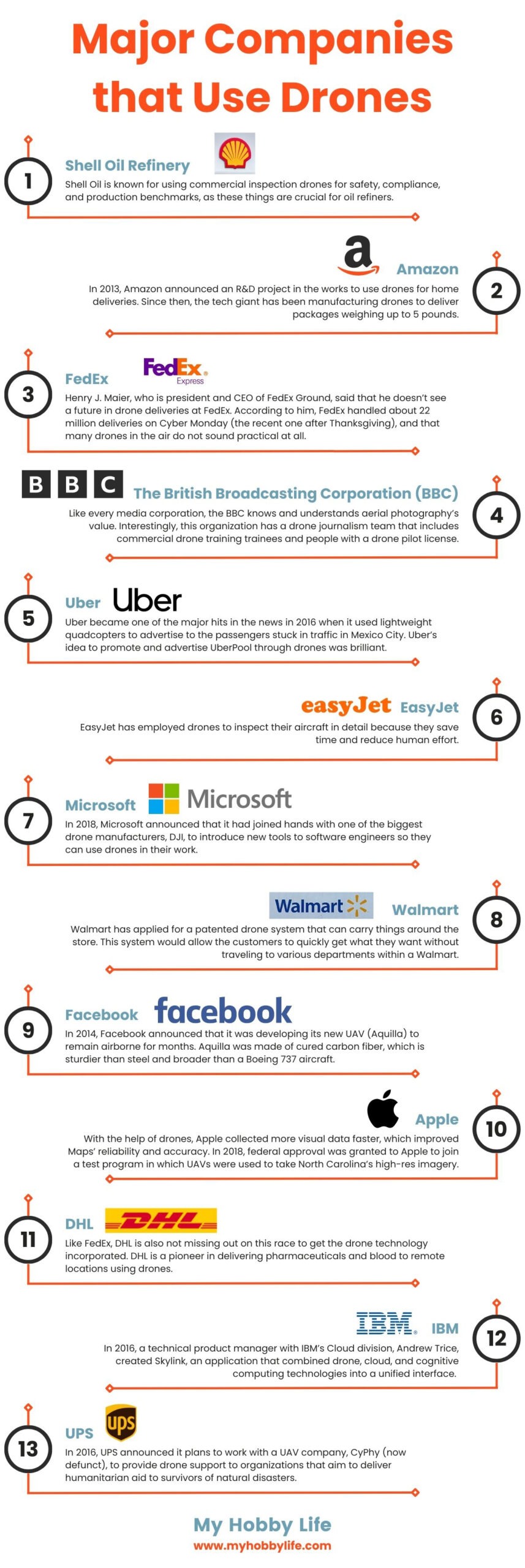Table of Contents
Commercial drones are being used in many industries to help save money, enhance efficiency, and improve the safety of various companies. Following are some of the best commercial drones on the market:
- DJI Matrice 300 RTK: An excellent drone used for outdoor inspections.
- DJI Mavic 2: Used for aerial photography and videography.
- Freefly Alta 8: Used for high-end cinematography, especially in the movies.
- Flyability Elios 2: Used for indoor inspections.
- DJI Agras MG-1: Used in Agriculture.
- senseFly eBee Classic: Used for mapping and surveillance.
- Parrot ANAFI USA: Used for public safety.
Data Collected by Commercial Drones
For inspection, a commercial drone plays a vital role in collecting important data that a person may be unable to put together manually. For instance, one can use a drone to inspect a giant tank or a tower’s top. In other cases, people may use them to collect data for surveillance, mapping, or helping investigators find human remains.
Following are the primary types of data collected by drones:
1. Visual Data
This is the most common type of data collected by a commercial drone. It flies over an area or object of interest and helps see things that aren’t otherwise visible.
2. Thermal Data
Aerial thermal data is the second most crucial data type collected by drones. This important data can help firefighters determine where a fire is coming from and focus their efforts. Moreover, drones also help inspectors find problem areas or faults in a solar array.
3. Multispectral Data
This type of data is collected by sensors is equipped on the drones that reflect energy within several specific bands or sections of the electromagnetic spectrum. Multispectral data is then available for agriculture and conservation purposes to monitor tree and plant health.
4. LiDAR Data
Some commercial-level drones are equipped with LiDAR sensors that throw a beam of laser light and then measure the reflection to create data points. Aerial LiDAR data help several industries to create 3D maps of an area. These sensors are an essential part of town planning or progress tracking of a vast area under construction.
Since LiDAR sensors can even penetrate earth and tree cover, they reveal structures hidden underground. Archaeologists use these special drones to discover new sites of interest for excavation.
5. Hyperspectral Data
Unlike multispectral sensors, hyperspectral sensors measure energy in more bands and sections. Therefore, this type of data is used to monitor crops’ health and security/defense. Drones with this technology can help detect an intruder in a given area.
Major Industries That Use Drones
1. Agriculture
Drones are a blessing for farmers who can benefit from them in real-time. They can use it for collecting information about large tracts of land, crop health, water use, heat signatures, and soil analysis. Expensive aerial inspections that could previously only be done with planes can easily be done today with drones.
One of the most prominent ways drones are used in agriculture is for thermal imaging[i]. These drones have multispectral sensors that give farmers a good picture of how crops (especially crop canopies) grow under various growing practices.
These drones have allowed farmers to collect so much raw data that managing it has created another important business opportunity. Besides collecting thermal data of their crops and lands, farmers can also use drones to map and study farmland and its irrigation systems. In these cases, drones can help accelerate the efficiency of the work that was otherwise considered tedious and time-consuming.
Moreover, drones can spray pesticides, fertilizers, or water over vast areas. A drone is far cheaper than a mini crop duster and can help with several agricultural tasks.
2. Infrastructure Development and Maintenance
Big construction companies and architectural firms are using drones more than ever for various purposes. Architects use aerial images and videos of a property to quickly create 3D renderings of the structure they aim to build. Moreover, they can also create real-world concepts of their projects using the same aerial shots.
The ability of drones to perform these tasks is beneficial for the architects as they can create accurate structures and designs and understand how they would fit within properties.
According to a Press Release by New York Power Authority, they tested drones to inspect an ice boom near Lake Erie[ii]. Inspecting one of these ice booms may cost around $3,500 to send a helicopter or $3,000 to send a boat. But with a drone, it cost less than $300.
AT&T, an American multinational telecommunications company, also uses drones to inspect their cell towers instead of human labor[iii]. This transition to drone over humans is a life-saving step because from 2013 to 2016, 34 communication tower-related fatalities were reported[iv].
Several energy companies, such as Duke Energy and Southern Company, also use drones to inspect their power plants, storm damages[v]. Similarly, startup companies like SkySpaces also use drones to inspect their wind turbines, which previously took hours with conventional methods[vi].
3. Drones as Infrastructure
Drones aren’t just used to inspect infrastructure but also to replace it. In 2017, AT&T successfully tested a drone called Flying COW (Cell on Wings) as a small replacement tower. It was designed to deploy at disaster scenes or evenly spread the load placed on static towers during significant events[vii].
Moreover, Facebook uses drones as a temporary replacement for current infrastructure and as a permanent solution.
4. Delivery
You might have heard about using drones for delivery services, especially from Amazon and DHL. Although the current delivery-based drones are restricted to a low maximum load-bearing weight (55 pounds), delivery by drone is an excellent application with a bright future.
The promise of goods delivered to your doorstep via drones will only become more of a reality as the technology evolves and its capabilities expand. Drone delivery will come in handy for areas where traveling by road is difficult.
5. Insurance
In case of any disaster or accident, agents and adjusters are always at the front line. Whether it is a natural disaster, house fire, or car accident, people depend on insurance companies to quickly inspect their cases and deliver financial relief.
Using drones to inspect an area after a natural disaster has become a new and better way to determine how bad the damage is. Being able to inspect the damage with an aerial drone can help provide a quick payout to people in need.
According to Deloitte, drone use by insurance industries is centered more on better risk management through improved data collection and actionable insights. Furthermore, drone use reduces operational costs due to improved efficiency and effectiveness in the settlement, processing of claims, and customer experience[viii].
Following are some noted uses of drones in the insurance industry:
- Home and land inspection
- Crop inspection
- Motor vehicle accident inspection
- Boiler and other tank inspections
- Post-disaster claim inspection
- Fraud detection/prevention
Country Financial, a major crop insurance company, estimates that drones perform much better at accounting for crop destruction and damage. Additionally, they can survey three times more areas than an in-person adjuster[ix].
6. Emergency Services
Using drones for emergency services, especially when responding to immediate medical needs, has paved the way for new opportunities for life-saving measures. A drone can provide medical supplies to stranded victims in places where traveling by road is difficult or time-consuming.
Drones are already used to inspect disaster scenes quickly, and now they have also been integrated with medical intervention.
7. Food/Restaurant Industry
The use of drones to deliver food to customers has many perks, and a reduction in CO2 emissions is one of them. In non-urban areas, drones can help deliver food in less time and to farther locations than their human counterparts.
In 2016, Domino’s and Flirty partnered for the first pizza delivery by a commercial drone in New Zealand[x]. The same year, Flirty began working with 7-eleven and completed 77 drone deliveries in Reno, NV[xi].
Drones are not just being used outside the walls of restaurants but also inside them. Infinium Robotics also tested the use of drones inside local Singapore restaurants that replaced waiters[xii].
8. Warehousing and Inventory Management
Using drones to inspect and scan thousands of crops in a field is not different from counting thousands of items in a warehouse. Therefore, several large retailers have invested in drones for their inventory management. Walmart has been testing drones to inspect its warehouses and check/flag missing items[xiii]. According to the company, drones can perform this task in a day, whereas it takes a month to do it manually.
9. Engineering
Large-scale engineering firms utilize drone technology on various projects, especially the in-depth ones that have something to do with transmission cables, oil pipelines, and maintenance inspections. Not only this but engineering firms are also involved in many things, such as road construction, infrastructure planning, airport planning, town planning, etc. And all these applications call for the use of drones for inspection and data collection.
10. Real Estate
Any real estate seller or buyer would understand the importance and value of marketing a property correctly. And where marketing is concerned, nothing is better than high-quality photos of the property. Using a drone to take top-notch property pictures from different angles can make a house look amazing.
Many real estate firms/agents also market properties for sale with the help of aerial video shots. Aerial footage of the roof, property layout, and neighborhood views can help the buyer make a firm decision even before visiting the property.
11. Hospitality & Tourism
Drones have a bright future in the hospitality and tourism industry, and since 2016, entrepreneurs are already looking for ways to incorporate drone technology into the hospitality and tourism space. The use of drones isn’t just limited to big picture ideas, but interestingly, they are being used at Marriott to shake cocktails for guests.
A Brooklyn-based innovator, Michael Cirino, has incorporated drone technology in a way that it can shake drinks. Not to mention he created a specialty cocktail named the test pilot[xiv].
When combined with Artificial Technology, drones can perform things that humans haven’t even imagined yet. Some of them include:
- Delivering packages and food at the doorstep and picking up laundry
- Mobile Hotels
- Security
- Life-guarding
- Entertainment/Activity
- Transportation of Materials
- Food and Beverage Preparation
- Property Maintenance
- Visual Marketing
12. Mining and Logging
Even in today’s high-tech world, where everything has become automated, mining and logging remain essential. A drone is used in this field for several purposes, especially worker safety. Being able to inspect the sites for safety hazards is much more efficient than sending a safety inspector there.
In addition to taking care of safety measures, a drone can also help locate hard-to-find minerals and other natural resources.
13. Healthcare
Like food deliveries, drones are also used to deliver medical supplies and equipment to areas that were previously less accessible. Coupled with AI and robotics, drones may be able to do much more, like transporting medical samples from one place to another without any human interaction.
In 2019, a drone transported a kidney from 2.8 miles in 10 minutes for transplant in Baltimore[xv]. Moreover, we also expect drones to deliver prescriptions along with medication, eliminating the risk of exposure to disease.
14. Security Services
While local security personnel can never be replaced, they can be provided with tools to boost their performance and efficiency at the job. A security guard can view far more than an entire CCTV camera network with the help of an aerial drone.
Just imagine the possibilities of using a drone for security purposes; it can alert the security guards if it senses a possible intrusion on the premises. It can help them in tracking said intruder down. This ability, amongst other uses, is just the tip of the iceberg.
15. Media (Advertising/Visual/News)
Media groups are already using drones for several things, such as news coverage from above the ground, aerial shots of fire or disasters, and much more. Previously, aerial shots were only available to big news corporations that could afford a news helicopter. But today, drones can do the same thing at a fraction of the cost and without having an onboard pilot.
In addition to that, drones can get into tighter areas where helicopters can’t reach. Even a face-to-face interview can be made more dynamic by using a camera-equipped drone hovering nearby. Moreover, some big drones can also display long banners in the air or drop branded items for marketing purposes. The possibilities of drones in media are limitless.
16. Disease Control
Fighting the outbreak of a disease isn’t an easy task. It never is and likely never will be. But drones certainly can help in humanity’s fight against things like cholera and Ebola. One example of this is their usage in mosquito control[xvi]. Mosquitoes have been spreading deadly diseases for centuries. You never know which mosquito is potentially carrying a transmissible virus.
Contacting these fatal diseases can be avoided using a drone, which obviously, can’t get affected. Moreover, drones can also gather vital data to prevent pollution, such as air, water, and land pollution levels, while not exposing humans to the pollutants.
17. Sports and Entertainment
The sports and entertainment industries are also heavily relying on drones to capture killer shots and footage. A drone can record both live events and as part of a production. Some sports broadcasters are even considering replacing spider or sky cameras with drones.
Apart from being used for broadcasting, drone races and drone fights are also a thing. And interestingly, the origins of drone races go back further than most commercial applications (2013-2014).
18. Weather Forecasting
Weather forecasting is considered one of the best applications of drones but does require extensive expertise. In addition, it is a highly complex use case where extreme weather conditions may affect the drone’s performance.
A drone can be used to collect essential meteorology metrics, such as wind speed and vectors, temperature, UV levels, humidity, etc. According to NOAA, all these metrics can help improve forecasting predictions and models[xvii]. Using high-performance, powerful drones can help lead to fewer human ventures into extreme weather conditions, such as tornadoes, hurricanes, earthquakes, floods, volcanic eruptions, and hail.
19. Energy Sector
Many uses of drones in the energy sector are similar to those mentioned above. Drones can be used as a tool to inspect infrastructure, diagnose, and fix specific issues, detect leaks or weak points, and much more.
A major benefit about drones is their ability to fly in contaminated areas like oil spills and around power lines without risking human life[xviii]. They can detect the spread and penetration of any leakage in these areas. Without drones, an inspection of wind turbines would have to be done manually, which usually is a dangerous task.
20. Airlines and Airports
Airlines and airports use drones to inspect hard-to-reach areas of airplanes, such as the top of a fuselage and vertical fin. With a drone, the crew saves time and a significant amount of effort required to inspect everything manually.
In addition, airports are using drones for pest control and scaring away birds as they pose a significant risk for airliners. RoBird is one of the best examples of this type of drone. It is designed to perform bird control at airports. It is a remote-controlled, robotic Peregrine Falcon that the airport uses to scare birds and lure flocks away from the airport space[xix].
Major Companies that Use Drones
We just discussed some of the top applications of drones above; let’s now talk about the leading businesses and companies that have utilized drone technology to perform critical tasks.
1. Shell Oil Refinery
Shell Oil is known for using commercial inspection drones for safety, compliance, and production benchmarks, as these things are crucial for oil refiners. These inspections may include difficult-to-reach spots, toxic fumes, and hazardous areas. Drones equipped with high-res cameras and high-precision sensors can easily carry out these tasks without human interaction.
2. Amazon
In 2013, Amazon announced an R&D project in the works to use drones for home deliveries. Since then, the tech giant has been manufacturing drones to deliver packages weighing up to 5 pounds. And the best thing is that this drone can deliver the items in 30 minutes or less, within the range of 15 miles.
Amazon decided to fly their drones at lower altitudes (around 400 feet above the ground) to avoid dangerous interference with passenger aircraft.
Not just the FAA, but Amazon also contacted the UK government in 2016 and negotiated to let them test their drone delivery services in the British airspace. Hence, Amazon completed its first drone-based delivery on December 7, 2016, in Cambridgeshire, England.
Currently, Amazon’s UAV systems heavily rely on onboard navigation systems that allow the drones to recognize obstacles, such as power lines, pillars, buildings, etc., and avoid them. The only downside is that the drones might not land properly for people living in condos and small apartments.
3. FedEx
Henry J. Maier, who is president and CEO of FedEx Ground, said that he doesn’t see a future in drone deliveries at FedEx. According to him, FedEx handled about 22 million deliveries on Cyber Monday (the recent one after Thanksgiving), and that many drones in the air do not sound practical at all.
However, the following year, FedEx reportedly applied for several patents concerning UAV technology to the US Patent and Trademark Office. Maybe we will see FedEx drone deliveries to our doorstep in the future.
4. The British Broadcasting Corporation (BBC)
Like every media corporation, the BBC knows and understands aerial photography’s value. Interestingly, this organization has a drone journalism team that includes commercial drone training trainees and people with a drone pilot license.
5. Uber
Uber became one of the major hits in the news in 2016 when it used lightweight quadcopters to advertise to the passengers stuck in traffic in Mexico City. Uber’s idea to promote and advertise UberPool through drones was brilliant. Due to Uber’s meteoric rise in the transportation sector, many people were influenced by this clever piece of advertising.
In 2018, the CEO of Uber, Dara Khosrowshahi, announced that he wanted to incorporate UAV delivery into its Uber Eats food delivery business by 2021. Along with FedEx and Alphabet, Uber has tested commercial drones in San Diego, California, to determine their true potential in low-altitude flights.
6. EasyJet
EasyJet has employed drones to inspect their aircraft in detail because they save time and reduce human effort.
7. Microsoft
Since Satya Nadella was appointed as CEO of Microsoft, they are dead set on improving their public image as a forward-thinking tech company. Part of that effort also includes the incorporation of UAVs into the enterprise.
In 2018, Microsoft announced that it had joined hands with one of the biggest drone manufacturers, DJI, to introduce new tools to software engineers so they can use drones in their work.
8. Walmart
Walmart has applied for a patented drone system that can carry things around the store[xx]. This system would allow the customers to quickly get what they want without traveling to various departments within a Walmart. This automated system would increase the response time and reduce reliance on human resources.
9. Facebook
In 2014, Facebook announced that it was developing its new UAV (Aquilla) to remain airborne for months. Aquilla was made of cured carbon fiber, which is sturdier than steel and broader than a Boeing 737 aircraft. Despite having a wider wingspan and sturdier material, it weighed about one-third of a car.
Facebook intended to use this UAV as part of its network of internet-connectivity aircraft. These UAVs were envisioned to fly above the commercial air traffic altitudes of 60,000 feet, providing internet to the whole world, especially the areas with no network infrastructure.
10. Apple
Apple launched its Maps back in 2012 with many promises, but it didn’t go as planned. People complained about its inaccuracy and lack of transit directions. For example, Maps may have incorrectly marked public buildings such as hospitals as shops, airport runways mistakenly marked as roads, and bridges ending up in the middle of rivers.
Due to all this, the CEO of Apple, Tim Cook, wrote an open letter for its limitations. These errors might seem minor, but they were potentially dangerous for people relying on Apple Maps for navigation. However, thanks to Apple utilizing drones, the accuracy of Maps has significantly improved.
With the help of drones, Apple collected more visual data faster, which improved Maps’ reliability and accuracy. In 2018, federal approval was granted to Apple to join a test program in which UAVs were used to take North Carolina’s high-res imagery. In this test program, Apple used DJI’s UAVs, including Leica Aibot, that generated 3D models of an area’s topography.
11. DHL
Like FedEx, DHL is also not missing out on this race to get the drone technology incorporated. DHL is a pioneer in delivering pharmaceuticals and blood to remote locations using drones.
12. IBM
One of the many challenges one has to face in responding to a natural disaster is determining the extent of damage, so that the relief efforts can be appropriately deployed. This challenge is where IBM comes in – it is working in drone technology to solve this problem.
In 2016, a technical product manager with IBM’s Cloud division, Andrew Trice, created Skylink, an application that combined drone, cloud, and cognitive computing technologies into a unified interface. Skylink allows users to connect a DJI drone to IBM’s cloud platform. After the drone is connected, the drone can relay live video feeds, captured images, and much more to an app running on an iPad.
13. UPS
UPS has been exploring drone technology for several years. It also offers logistical support to non-profit organizations working in developing countries. In 2016, UPS announced it plans to work with a UAV company, CyPhy (now defunct), to provide drone support to organizations that aim to deliver humanitarian aid to survivors of natural disasters.
UPS conducted a mock delivery of a child’s asthma pump from Beverly to Children’s Island, approximately three miles offshore, to test their drone-based capabilities. The flight lasted about eight minutes.
- “How can agricultural drones help farmers make decisions?” Retrieved from https://www.agfoundation.org/news/how-can-agricultural-drones-help-farmers-make-decisions
- “First Ever Drone Inspection of Niagara Ice Boom.” Retrieved from https://www.nypa.gov/news/press-releases/2017/20170127-drone-inspection
- John Donovan (July 13, 2016), “Drones Taking Our Network to New Heights.” Retrieved from https://about.att.com/innovationblog/drones_new_heights
- “Communication Towers.” Retrieved from https://www.osha.gov/communication-towers
- Randy Wheeless (June 20, 2016), “Drones go where man has gone before.” Retrieved from https://illumination.duke-energy.com/articles/drones-go-where-man-has-gone-before
- “SkySpaces.” Retrieved from http://www.skyspecs.com/
- Art Pregler (February 21, 2017), “When COWs Fly: AT&T Sending LTE Signals from Drones.” Retrieved from https://about.att.com/innovationblog/cows_fly
- “Insurance industry drone use is flying higher and farther.” Retrieved from https://www2.deloitte.com/us/en/pages/financial-services/articles/infocus-drone-use-by-insurance-industry-flying-higher-farther.html
- Laurie Bedord (September 9, 2019), “DRONES SHOWING THEIR VALUE IN AG.” Retrieved from https://www.agriculture.com/technology/crop-management/drones-showing-their-value-in-ag
- David Reid (November 16, 2016), “Domino’s delivers world’s first ever pizza by drone.” Retrieved from https://www.cnbc.com/2016/11/16/dominos-has-delivered-the-worlds-first-ever-pizza-by-drone-to-a-new-zealand-couple.html
- Ansuya Harjani (February 9, 2015), “At this restaurant, waiters walk and fly.” Retrieved from https://www.cnbc.com/2015/02/09/flying-robots-debut-as-waiters-at-singapore-restaurant.html
- Anne D’innocenzio (June 2, 2016), “Wal-Mart testing drones in warehouses to manage inventory.” Retrieved from https://apnews.com/article/ee9b77dba1a5460a91fef2842ccb8955
- “Cocktail revolution: drones that deliver drinks, (September 25, 2018).” Retrieved from https://www.worldsbestbars.com/cocktail-revolution-drinks-and-drones/
- David Freeman (May 3, 2019), “A drone just flew a kidney to a transplant patient for the first time ever. It won’t be the last.” Retrieved from https://www.nbcnews.com/mach/science/drone-just-flew-kidney-transplant-patient-first-time-ever-it-ncna1001396
- Kevin Gallagher (August 03, 2017), “Drones in the Fight against Disease Outbreaks.” Retrieved from https://www.simulyze.com/blog/drones-in-the-fight-against-disease-outbreaks
- Kenneth Vierra (September 18, 2019), “Using Drones to Help Improve Weather Forecasts.” Retrieved from https://uas.noaa.gov/News/Articles/ArtMID/6699/ArticleID/824/Using-Drones-to-Help-Improve-Weather-Forecasts
- Nicole Raz (November 1, 2016), “NV Energy says it used drones to inspect power lines.” Retrieved from https://www.reviewjournal.com/business/energy/nv-energy-says-it-used-drones-to-inspect-power-lines/
- Frances Marcellin (February 27, 2020), “Good drones: the UAVs changing airport operations for the better.” Retrieved from https://www.airport-technology.com/features/positive-uses-of-drones-in-aviation/
- Jonathan Vanian (March 18, 2017), “Drones May One Day Buzz Inside a Walmart Near You.” Retrieved from https://fortune.com/2017/03/17/walmart-drone-delivery-patent/
